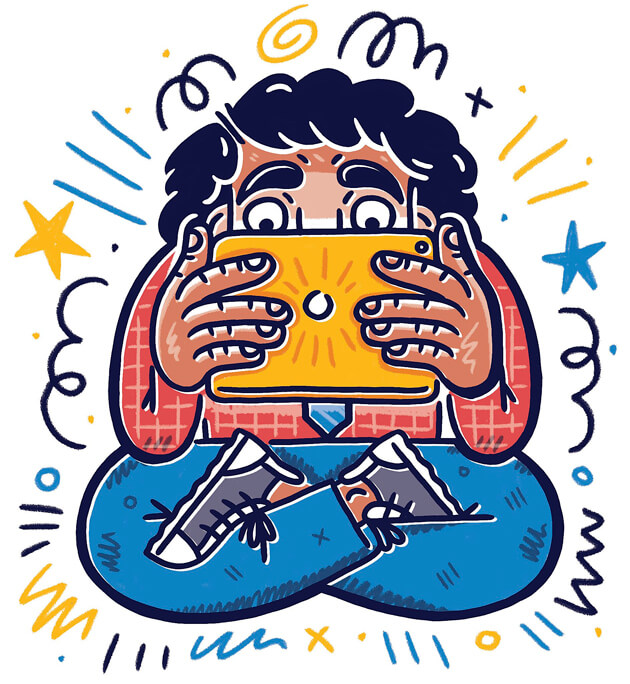Aug 19, 2019 Schools
Ahead of a technology curriculum update, schools are already abandoning the Bring Your Own Device “fad” and declaring tablets unfit for high-school learning.
New Zealand’s technology curriculum is due for an upgrade. The Ministry of Education’s revisions to the subject will be mandatory from the start of the next school year, putting a greater focus on digital technology. The aim is for students to evolve from being competent tech users, to digital creators and innovators. What place, then, does technology have in New Zealand’s classrooms?
Sometimes it seems like our lives revolve around digital technology. For many of us, our phones are the first thing we pick up in the morning and the last thing we look at each night. We watch TV on the same laptop we work on all day. A generation or two ago, schools were tasked with teaching New Zealand kids about digital technology by instructing them how to use it. Since then, laptops and tablets and phones have become so commonplace, it’s no longer necessary for schools to teach high-school kids how to make them work.Rather, they have become tools for nearly every other subject as well.
The ministry’s forthcoming 2020 curriculum update reflects a growing understanding that incorporating technology into learning is not about chucking kids in front of a screen and expecting miraculous increases in test scores. For many schools, the Bring Your Own Device (BYOD) craze of the past five or so years has had to be adjusted and, in many cases, scaled back, as promises made about the capabilities of devices such as tablets to improve learning outcomes failed to deliver.
For more great videos, check out our Youtube Channel.
In Silicon Valley, the global epicentre of cutting-edge technology, the very innovators who promised a technological revolution are starting to drastically limit their own children’s device use. According to the New York Times, “a wariness that has been slowly brewing is turning into a regionwide consensus: The benefits of screens as a learning tool are overblown, and the risks for addiction and stunting development seem high.”
Digital devices and technology are already an integral part of the modern world, and exposure to technology is essential, lest students get left behind in the digital age. But the question of balance when it comes to screen time (educators are well aware students likely spend hours every day on their phones or computers outside of school) is one that remains top of mind. One Auckland principal says when considering introducing digital technology into the classroom, he tries to flip the question from “What can this bring us?” to “What might it take away?” How, for example, might replacing handwritten note-taking with typing affect the development of students’ motor skills? Handwriting may become unnecessary in a largely digital world, but fine motor skills are essential for daily life.
It seems the real value in digital technology use lies in providing a new and at times more practically relevant way to do what schools have always done: teach students how to think, how to learn, and how to problem-solve. As technology evolves at a rapid pace, it’s more important than ever that school-leavers are adaptable. Knowing how to problem-solve is key to adaptability, which can be taught using technology as a tool, whether it’s a virtual- reality (VR) machine or a pencil.
For Lesley Sampson, head of the creative industries department at Epsom’s Diocesan School for Girls, a private Anglican-based primary and secondary school, the ministry’s curriculum change is a reflection of this realisation. “When I first started teaching digital tech, it was stuck in ‘Oh you should be teaching Excel or Word’. [The new curriculum] is not about using tools, it’s about creating your own things.” At Dio, Sampson’s students are excited by hands-on robotics projects and engaging with VR machines in ways that include architecture students creating virtual walk-throughs of buildings they design.

At McAuley High School, a decile-one Catholic girls’ school in Otahuhu, they’re also investing heavily in technology. This is partly made possible by donations from various firms and trusts, which cover costs for new equipment when government funding is exhausted. Acting principal Anne Miles says at McAuley, which performs well in technology for its decile, technology is given high priority and staff have been working hard to make sure the school will meet the curriculum requirements by the start of next year. “We’ve got industrial robotic arms, which are programmable, we’ve got a drone to be used for photography, we’ve got 3D printing devices,” says Miles. Use of new technologies crosses over into the humanities as well: funding has just been allocated for a “wave finders” project where students will study how wave patterns influenced the first navigators. “It’s a case of exposing them — because they actually self-teach — to technology to experiment with it and not be hindered by the fear of making a mistake.”
“What we see is devices such as laptops and laser cutters enable students to be more ambitious with the production of their outcome,” says Mt Roskill Grammar acting principal Janine Tupaea. “But without adding in the critical thinking and the planning and evaluation, the value to the students’ learning is limited.” Like all education, it’s also about having quality teachers, who are themselves digitally fluent. “There’s no point having all this great equipment and it’s not being incorporated into the learning.” Mt Roskill, a decile-four school that, like McAuley, performs highly in technology for its cohort, understands technology is an essential tool for the learning that underpins modern careers. “We don’t want our students to miss out.”
The amount of technology available in Auckland’s schools now is quite astounding to anyone who left school before the end of the noughties: 3D printers are par for the course amongst all deciles; robotics are commonplace, as are laser cutters; and many schools are incorporating Spheros, programmable circular robots, to teach students about coding and mathematics. Apps used by music students allow them to practise alone with the digital accompaniment of an entire orchestra, and Google Classroom, a free web service, allows students and teachers to communicate and coordinate assignment hand-ins and feedback.

ACG Parnell, a co-educational secular private high school, has had a full VR machine since 2017. VR sits largely outside the curriculum but is available for “very capable students who want to push on and explore those opportunities” in their free periods or after school, says principal Russell Brooke. This aligns with many schools’ desire to both expose students to emerging technologies and encourage them to want to learn, by allowing opportunities to follow personal interests. “[VR is] a huge thing going forwards. Let’s say you want to learn to do something; traditionally, you’d look that up in a book. Nowadays you’d google it or watch a YouTube video. In the future, you’ll put a mask on or a helmet on and you’ll see an augmented reality which overlays the actual parts.”
At this point it’s a given that high schools in New Zealand will facilitate laptop access for students, whether through BYOD schemes or, in lower-decile schools like McAuley or Mt Roskill, a mix of BYOD and school-provided devices. Digital literacy and confidence are essential for school-leavers and investing in digital technology is generally a high priority when it comes to deciding where to allocate funding. However, devices are no longer seen as harbingers of progress in and of themselves, and device use is generally being treated more cautiously than it was five or six years ago.
Rangitoto College, a decile-10 state high school in Mairangi Bay, was a fairly early adopter of BYOD, introducing the concept in 2013. Six years on, the school is now able to complete a BYOD review assessing a full cycle of BYOD students from Years 9 to 13. The main takeaway has been that device use should be scaled back considerably — and tablets should be used rarely, if at all. “Tablets aren’t fit for purpose in a secondary-school environment,” says principal Patrick Gale.
Rangitoto has found tablets’ range of applications is too limited to be effective in class, and their relative lack of efficiency drives up students’ distraction rates and lowers engagement. Laptops are now preferred, but are not used all the time. It was about half-way through the BYOD review process that staff realised using devices constantly for both resource access and note-taking wasn’t enhancing learning outcomes. “When we started off here there was a really big emphasis on as much laptop use as possible,” Gale says. “We’ve since found that, yes, those skills are absolutely appropriate and necessary, but at times it’s more appropriate to be using a textbook or a pen and paper or group discussion.”

The discovery was partly made through student feedback — it turns out the kids themselves didn’t like being on devices all day long, although many like to use their laptops for doing homework. Gale insists the learning outcomes at Rangitoto weren’t negative — he rejects the idea students at the start of the BYOD cycle were victims of a failed experiment — but says heavy device use simply didn’t deliver the outcomes that were initially hoped for. “People felt there were so many possibilities with technology, and those possibilities were going to open up incredible learning outcomes for students. The reality is that students like a combination of activities and teaching and learning styles.”
ACG has been cautious in its approach to incorporating digital tech in classrooms. Like Gale, Brooke dismisses the usefulness of tablets altogether, saying there’s no research to show they improve learning outcomes. He also dismisses BYOD as a “fad”, though he says students do work on laptops regularly — as long as they’re the right tool for the task at hand. “All the basic principles of teaching and learning apply, and we will use whatever devices are needed — be it a whiteboard or projector or other technology equipment.”
Though wary about compounding the perception Steiner schools are anti-technology, Michael Park principal Terry Storer is nevertheless cautious in his approach to technology: the Ellerslie school is only now considering whether to become a BYOD school, for Year 12s and 13s only. “We do use technology, obviously we do — it’s part of the modern world. But we just use it when it’s appropriate and we use it in a very considered way.” Storer says we’re easily seduced by promises of what technology can do for us but don’t often consider what it might take away. He points to the lack of research around what digital tech can cost kids in terms of their development.
Mainly, he’s worried heavy device use, or using technology for the sake of it, can stunt students’ creativity. “Many programs are designed to give predetermined outcomes,” he says. “Because they’re run by algorithms they’re quite rational — there’s multiple options, but the multiple options are not limitless. And so, inherently, using a device starts to train people to think in certain ways.” Creativity is highly valued in the Steiner philosophy, and where creativity is enhanced by digital technology, that has been embraced — for example, by the use of Photoshop in photography, which opens up more ways for students to explore imagery.
Storer points to demand coming from universities and employers for students to have better-developed so-called soft skills, like the ability to collaborate. He believes fostering these qualities in students will deliver better outcomes down the track than heavy and unconsidered technology use.

Interpersonal skills are also what author Kinley Salmon believes will be valued highly by employers as automation in the workforce increases. His Jobs, Robots and Us looks at two possible futures for New Zealand, based on how we deal with an increasingly automated workforce (a 2015 PWC report estimated some 5.1 million jobs, just under half of Australia’s workforce, were at risk of digital disruption in the next 20 years). “I do think those kinds of social, emotional skills — can you lead a team, can you understand if there’s something going wrong in a team dynamic, can you bring people together — those skills are still going to be really, really useful.”
Problem-solving skills, like those emphasised in the new curriculum, will be key for students once they leave school — more so than being technically brilliant at one particular kind of digital technology. “I do think upskilling in technical areas, you know, coding and things, is valuable in the abstract,” Salmon says. “What’s trickier about that is it does change quite quickly, so the broad point I’d make is that the really critical thing to be able to do is to continue to learn throughout life.”
Salmon places high importance on stimulating a love of learning, in and of itself. It’s very easy to fall into thinking about education only as a route to employment, but this misses something essentially valuable about its purpose. “Education can also be about self-discovery. What excites me, what do I find interesting, what can I learn about the world that might fascinate me? That’s part of becoming an adult and a person who’s engaged with the world and the society they live in.”
The society we live in is increasingly happening on devices and online. St Cuthbert’s principal Justine Mahon is acutely aware any student lacking digital competence could simply be left behind. “Education has got to stay relevant in the face of rapid changes to society. When you equip them to engage in the technological world, you’re also really using skills that educators have used for years, in that you’re still teaching them to think critically and think deeply.”
At St Cuthbert’s, a private non-denominational girls’ school in Epsom, girls are heavily encouraged to explore STEM (science, technology, engineering, maths) subjects, which are still dominated at university and professional levels by men. Boys come more readily to the digital world, Mahon says, and she hopes to build strong digital competence and confidence in St Cuthbert’s students so they will feel comfortable pursuing tech-heavy careers later in life. “Equipping the girls with the relevant skills to engage with the digital world is going to be key to successful participation in work and life.”
This piece originally appeared in the July-August 2019 issue of Metro magazine, with the headline “Digital Reboot”






